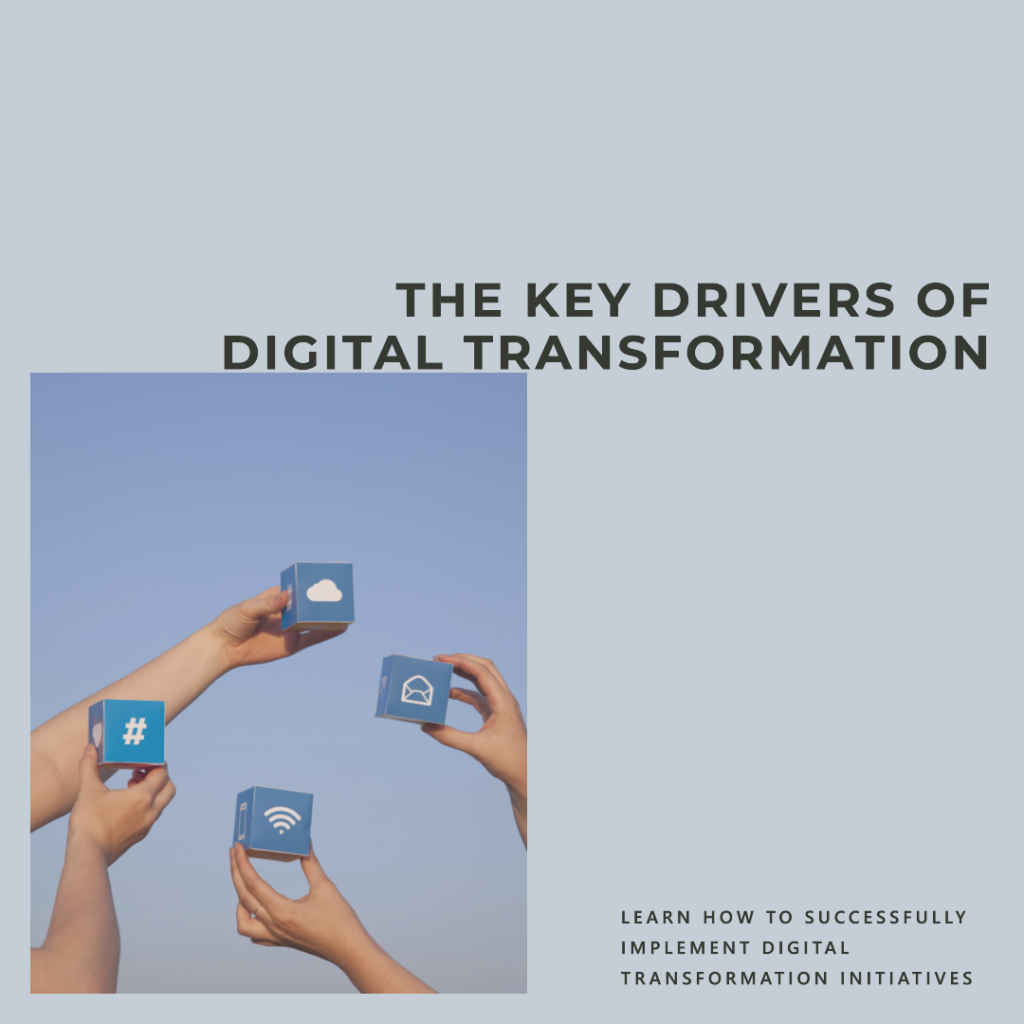In the dynamic realm of business, where innovation propels success, digital transformation has emerged as the beacon guiding organizations toward a brighter future. Digital transformation isn’t just an option; it’s a necessity to stay competitive and relevant. However, embarking on this journey requires a comprehensive understanding of the key drivers that fuel successful digital transformation initiatives.
1. Leadership Vision and Commitment
The crux of any transformational journey lies in leadership’s unwavering commitment and vision. When leaders recognize the significance of digital transformation and actively champion it, the entire organization rallies behind the cause. Leadership sets the tone, communicates the urgency, and ensures that digital transformation becomes an integral part of the organizational strategy.
2. Customer-Centric Mindset*
A successful digital transformation isn’t about technology for the sake of it; it’s about enhancing customer experiences. Organizations that prioritize understanding customer needs, preferences, and behaviors gain a competitive edge. By aligning digital initiatives with customer expectations, companies can deliver personalized experiences, anticipate demands, and foster lasting relationships.
3. Agile and Adaptive Culture*
Digital transformation isn’t a one-time project; it’s an ongoing process that requires agility and adaptability. Cultivating a culture that embraces change, encourages experimentation, and learns from failures is essential. An agile culture empowers employees to identify opportunities, pivot quickly, and continuously innovate in response to evolving market dynamics.
4. Data-Driven Decision Making*
Data is the lifeblood of digital transformation. Organizations that harness the power of data analytics gain actionable insights that guide decision-making. By analyzing customer behavior, operational inefficiencies, and market trends, businesses can make informed choices that lead to improved efficiency, innovation, and competitive advantage.
5. Technology Infrastructure*
A robust technological foundation is pivotal for digital transformation success. This includes modernizing legacy systems, investing in cloud computing, and adopting emerging technologies like artificial intelligence and machine learning. A well-integrated and flexible technology stack provides the agility required to respond to changing business needs.
6. Talent and Skill Development*
Digital transformation demands a workforce equipped with the right skills. This involves upskilling existing employees and hiring talent proficient in digital technologies. When teams are empowered with the know-how to leverage new tools and technologies, they can contribute effectively to the transformation journey.
7. Clear Strategy and Roadmap*
Digital transformation should be guided by a clear strategy and roadmap. A well-defined plan outlines the goals, milestones, and steps required to achieve the desired outcomes. This roadmap acts as a guiding light, ensuring that efforts remain focused and aligned with the organization’s objectives.
8. Cross-Functional Collaboration*
Digital transformation transcends departmental boundaries. Effective collaboration between different functions—IT, marketing, operations, and more—is imperative. Cross-functional teams bring diverse perspectives to the table, fostering innovation and ensuring that digital initiatives are integrated seamlessly across the organization.
9. Change Management
Change is inherently challenging, and digital transformation brings significant changes to processes, roles, and workflows. A robust change management strategy ensures that employees are prepared for the transformation journey. Clear communication, training, and support help employees navigate the changes with confidence.
10. Measurable Outcomes and Iterative Approach
Success in digital transformation is measurable through key performance indicators (KPIs). Tracking KPIs allows organizations to assess the impact of their initiatives and make necessary adjustments. An iterative approach, where insights from data and customer feedback inform refinements, ensures that the transformation journey remains aligned with the evolving needs of the business and its customers.
In conclusion, successful digital transformation hinges on a combination of visionary leadership, customer-centricity, cultural agility, data-driven decision-making, technology integration, skilled talent, strategic planning, collaboration, effective change management, and continuous improvement. Organizations that embrace these key drivers are not only better equipped to navigate the complexities of the digital landscape but are also positioned to thrive in an era of rapid change and innovation.


